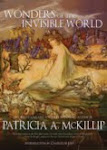Sheep River Provincial Park is located 106km SW of Calgary in Alberta. Take highways AB-22 and AB-546W, or AB-2A south to Otokoks, then west on AB-7 to Black Diamond and at Turner Valley to AB-546W, leaving 36km.
Sheep River is part of the Bow River watershed, providing drinking water to the towns of Turner Valley, Black Diamond and Okotoks.
The Sheep Falls are located near the Bluerock Campground and the Indian Oils Trail on the Sheep River Road at the western portion of the Park.
The park is open May 15 to November 30th each year which assists the Bighorn Mountain Sheep in maintaining their herd numbers. For the avid outdoors person there is camping, hiking, biking/cycling, fishing, horseback riding, and, of course, photographing birds and spectacular landscapes. For fishing enthusiasts a fishing license is required, and there is a catch and release in effect. This park is home to Cutthroat Trout, Bull Trout and Rainbow Trout. For the hiker often deer, elk, bear and Bighorn Sheep are seen.
For hikers there is information on the trails with
Alberta Parks showing the degree of difficulty and more information. Group hiking is essential as this is bear country!
Historically, in 1884 to 1885
John Ware worked for the Quorn Ranch located on the Sheep River.
Photo Credit: phoven CC=flickr.
Research:
wikipedia
AlbertaParks.ca




